CONTACT US
| +86-10-82600771 | |
| WhatsApp: +86-13911460247 | |
| Messenger: chinatournet | |
WeChat ID: callchinatour | |
Forbidden City
- the
world's foremost museums of Chinese art Book Forbidden City Tour
In the central heart of Beijing, the Forbidden City (Imperial Palace) remained the residence of the emperors for nearly five hundred years, from the 15th century to the early 20th century, and was the actual and symbolic seat of imperial power. Popularly known as the Forbidden City, it was built in the Ming Dynasty between the 4th and the 18th years of the Yongle period (1406 - 1420 AD). Many of the buildings of the Palace have been repaired and rebuilt, but their basic style and layout remain in their original state.

This magnificent, palatial architectural complex covers an area of over 2,350,000 square feet and contains 9,999 rooms. It is surrounded by ten-foot-high walls which are crowned by four observation towers and flanked by a deep moat. The walls are pierced by four large gates, each with three openings and a broad crowning pavilion.

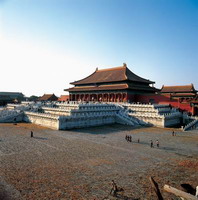
The layout of the Forbidden City is based on a Chinese cosmic diagram of the universe that clearly defines the north-south and east-west axes. The buildings represent the largest and best-preserved examples of Chinese traditional architecture found today. The overall layout is centered on the three primary Halls of State: The Hall of Supreme Harmony (Taihedian), The Hall of Middle Harmony (Zhonghedian) and The Hall of Preserving Harmony (Baohedian). State ceremonies were held in the Outer Court (Wai Chao) of the Forbidden City. Here the emperors governed from their thrones, holding court sessions with their ministers, issuing imperial edicts and initiating military expeditions. The Outer Court was also the site for important ceremonies: the accession of a new emperor to the throne, birthdays and weddings. The Inner Court (Nei Ting) was the residential area of the emperor and the imperial household, as well as the place where the emperor dealt with routine state affairs.


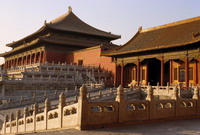
The Forbidden City was the scene of many significant events affecting the course of Chinese history. Secret World of the Forbidden City: Splendors from China's Imperial Palace explores the objects housed in this important complex, lending insight into the mysteries of the imperial court under the Qing Dynasty, from the entry into the city of Manchurian troops led by Li Sicheng to the pinnacle of artistic creativity under Qianlong to the decline of the dynasty and the abdication of the last Emperor Xuantong in 1912.
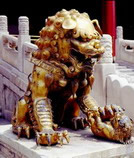
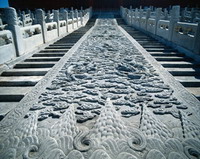

Today, the Forbidden City is one of the world's foremost museums
of Chinese art. Its palaces and halls are filled with innumerable works of art
and cultural artifacts, including gifts of state, military campaign loot and
furnishings and possessions of members of the imperial households. A great
number of these treasures represent the peak of artistic and inventive genius
exhibited by the countless artisans who worked exclusively for the imperial
court.
Nine Dragon Screen
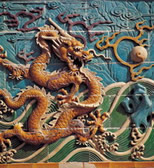

hotels nearby